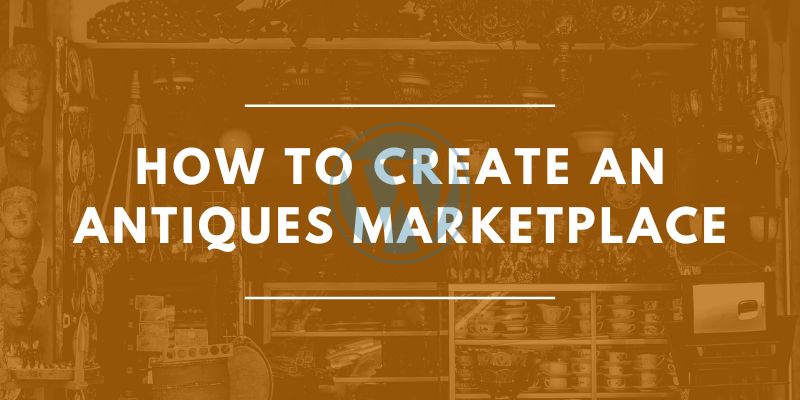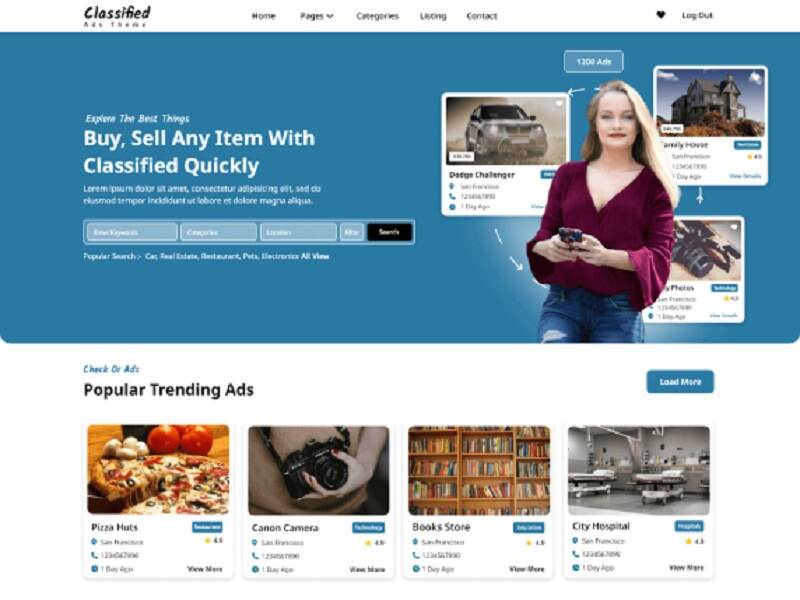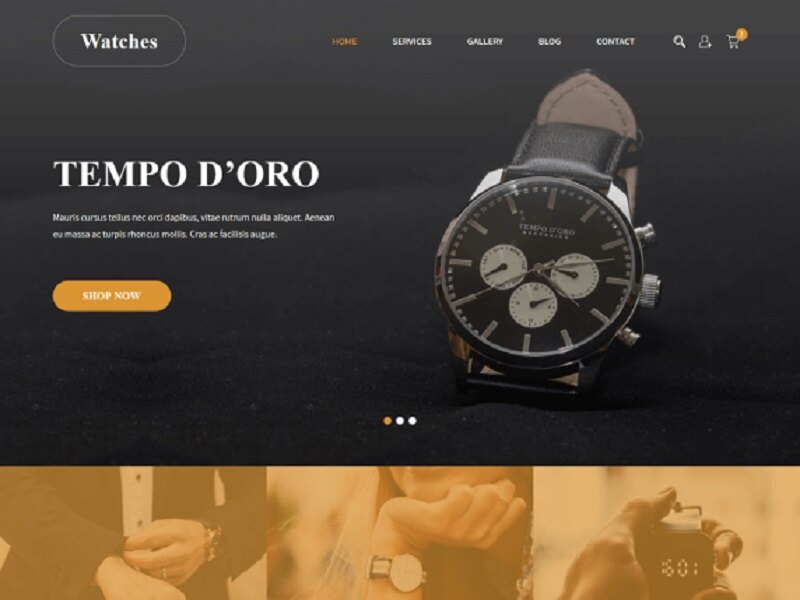
How to Create an Antiques Store in WordPress
In this article, we will show you How to Create an Antiques Store in WordPress. Via the internet for works of art, that could be an optimistic area of the economy to exploit. This book provides a knowledge base on the various reasons and actions for people intending to get involved in antique markets.
What is an antiques marketplace?
The Antique Online market is the place where you can quickly find things to sell or buy without leaving your house. These fairs showcased an amazing variety of delicately crafted products, from wood furniture to silver jewelry and unconventional boutique goods. Users can browse at their leisure by looking for the item of their choice under the various categories. Such places typically consist of some sections with feedback and evaluations that make it easy for the consumers to rate the level of reliability and quality of the service providers. In addition, most online bazaars provide reliable payment methods and shipping services to ensure that a seamless business process happens between the antiques.
Why create an antiques website?
What advantages do purchasers have?
Antique hunters may enjoy searching for unique and special pieces not commonly found elsewhere. They can take the time to discover valuable jewelry, possibly containing diamonds once owned and worn by ancient rulers. Exhibitions also offer the chance to engage with experienced professionals and enthusiasts who can provide insights into the authenticity and value of the antiques you wish to buy.
What advantages do sellers have?
Antique sellers can try to gain access to an enormous and coherent community made up of antique lovers, gay collectors, and interior designers. By portraying their antiques to a broader audience, they can increase the probability of capturing the right buyer. Consequently, vendors have additional tools like the ratings and credibility of the marketplace, which they can use to build reliability and attract confident shoppers who feel good about the entire transaction.
What are the advantages for the owner of the marketplace?
Sellers could monetize the antique platform by paying listing fees, transaction fees, and subscribing to premium services. Moreover, a market could feature thriving traders and consumers whose presence continuously stirs up the place and makes it increasingly popular among guests. On top of that, the consulting business may get recognition as an acknowledged expert in the old-fashioned sphere, allowing it to establish partnerships and collaborate with related enterprises.
Markets for antiques that are successful
This is one of the sites that ranks the highest for its popularity in regards to antiques. Consider intensively diverse platforms so that you may have a better understanding of an industry in operation and find the niche for yourself.
- Etsy: Etsy is a well-known online store that sells a variety of handmade goods, antiques, and vintage goods.
- Ruby Lane: Ruby Lane is an online marketplace with a specific concentration on fine art, antiques, and vintage artifacts.
- 1stdibs: 1stdibs carefully chooses an assortment of luxury products, antiques, and vintage furniture for its posh internet store.
- Chairish: Chairish dedicates its online store to selling antiques as well as vintage design, art, and furniture.
- GoAntiques: GoAntiques is an online store that specializes in antiques, collectibles, and vintage goods. It provides a large selection of goods from different vendors.
What features are essential for an antique platform?
The capacity to link buyers and sellers of antique things is the most crucial feature of an antique marketplace. This comprises attributes like:
1. Listing and search: Vendors have to have a chance to list their vintage wares on a marketplace with little effort and provide comprehensive product information, as well as great-looking photos in addition to competitive pricing. They should have the opportunity to look up and go through the ads and thereby get information about the particular pieces of antique that have their eyes fixed on them.
2. Communication: There should be some channel of communication between buyers and sellers so established by the marketplace. They may come in the form of messaging within chat platforms, negotiation of prices, and other details communicated via chat that might revolve around the product’s stock, etc.
3. Secure transactions: The platform market must have a secure system of payment that enables exchanging the money between buyers and sellers. Interfacing with trustworthy payment systems or escrow options should be seen as a measure to safeguard both consumers and businesses.
4. Verification and authentication: The marketplace needs to implement mechanisms that verify the manufacturer and the quality of the products to guarantee that ancient artifacts are the only ones retained in the market. This could involve the provision of certifications, authentication of the seller, and coordination with industry leaders on the necessary subject expert matters.
5. Reviews and ratings: Customers must also be allowed to rank and rate merchants and their expertise in this marketplace. Thus, consumers make informed choices that and, of course, credibility in the community and trust.
6. Shipping and logistics: The market portal is supposed to have the service for shipping and logistics choices, allowing people to track the goods, calculate delivery costs, and organize delivery.
Community and information exchange:
Moreover, the antique marketplace may use these platforms from old times to build cordial relations between vendors and buyers. Additionally, this could be an informational blog, discussion forum, or directions that would help people share their knowledge, skills, and perspectives on artifacts.
In the last analysis, this is the principal function that a virtual community must provide to buy and sell antiquities by being a reliable tool for buying and selling while maintaining community trust, security, and authenticity.
What are the possibilities and expenses involved in creating an antiques marketplace?
Expenses associated with starting from scratch
There are several expenses associated with starting an antique marketplace from scratch. These expenses may consist of:
1. Development Costs: Moreover, the developers’ team is transitioning their focus to creating our marketplace platform’s design, architecture, database configuration, frontend and backend development, and payment gateway integration. Additionally, this amount may change based on how powerful the trait is, which can range between a few thousand to tens of thousands of dollars.
2. Design Fees: As a result, a professional designer needs to be hired to come up with an engaging and user-friendly interface for the platform. Additionally, due to the designer’s experience and the numerous design iterations required, the final cost may vary.
3. Infrastructure Costs: the maintenance of the servers, storage, and security procedures of all portal types. The infrastructure expense figures could differ depending on the estimated traffic and scalability.
4. Marketing expenses: To attract consumers and merchants, one can market the marketplace through various channels such as content creation, internet marketing, social media marketing, and search engine optimization (SEO). Each campaign may target different markets and have distinct goals, resulting in varying marketing expenses.
5. Costs associated with upkeep and support: Ever present obligation to cover the costs of maintaining the correctness of the platform, updates, and customer support. This service may sound like something that has and needs to include handyman fees, software being upgraded, machine maintenance, or customer support people.
It is essential to consider the case that the pricing of the service to set up the online marketplace for antiques may vary based on some parameters such as the required feature, project complexity and size, and specific requirements.
Some further ideas for creating a vintage goods marketplace
The antique internet marketplace start-up needs to invest substantially to make it an up-and-coming marketplace for antique products. Additionally, nowadays, there are a lot of inexpensive options that could be applied to our platform development process.
The choice you ought to make is determined by:
- The characteristics you think your market needs
- Your technical skills (or your team’s skills)
- Your spending plan
- The length of time that is at hand
There are several ways to build a marketplace, including
- Making use of addons and WordPress
- Building on top of open-source applications
- Making use of several no-code tools
- Making use of a certain no-code marketplace SaaS application
- Building upon an API-driven SaaS platform for marketplaces
Next to your learning and monetary speed, along with that of your skill constraints, you also need to be mindful of your speed to learn. In case you start your great antique marketplace today you will have proper real-time knowledge about your users very soon. You gain these insights, which help you to evaluate the product of your competitors and come up with a platform loved much more than all other options.
To begin with, we do not require any special knowledge of coding resulting in the establishment of the vintage products platform in just a day.
Completing the launch of your platform may expose the additional features and functionalities required to accommodate the audience. You might wish to opt for a mobile application instead, complete third-party integrations, or completely rework the flow and style.
Recommended free WordPress Theme For Creating an Antiques Website
Antiques Website

A clever and responsive theme for online classified listings that is fully featured and adaptable to changes is the goal of classified listings. The service is a simple interface that allows the user to customize, and it targets a range of specialty industries, including real estate, employment, services, and products. People who want to place ads or find the ads can do so with ease by users. The main adjunct for the themes is a frontend submission mechanism that is user-friendly for registered users, who just have to fill in their listings.
This topic can apply to a series of projects, such as incorporating travel and lodging, antiques and vintage collections, and providing instruction and guidance on the website. This process has resulted in the emergence of realtors, bookings, hotels, single property owners, and rentals. It is, therefore, an ideal community-based choice to establish a trading ground that is motivated and driven by the same community. Classified Listing features advanced search and filter functions, enabling users to narrow down their choice of posts within defined post categories or locations, among other significant criteria.
The mission for Classified Listings is to establish an engaging and addressing media outdoor that will guarantee the convenience of access for a user. The motto of this particular CMS always involves linkable frontend editing as well, which means every website on the page has the same design while being individually different. Thus, it would yield better search results and keep users involved.
SKT Luxury

The SKT Luxury handle is just one opulent template that you can apply to showcase items from luxury brands, such as watches, sunglasses, bags, shoes, and fashion items, as well as undergarments, mobile phones, luxury cars, antiques, cigars, apartments, condominiums, services, and even portfolio showcases. This theme offers extreme convenience, including a ready-to-import Elementor template plugin and a variety of Elementor design templates for your homepage and other internal pages.
Recommended Free WordPress Plugins For Creating an Antiques Website
Pelagios Widgets for WordPress

The use of Pelagios widgets from your own websites is permissible. Those widgets connect a user to different locations and objects through ancient artifact collections.
There are two widgets: on the one hand, the first one involves putting on your website details about places you cover while the other enables users to search for information on the specific locations.
Tourist maps that show visitors these things are included in the information provided in the material from famous museums, research and university libraries, or Pelagios partners.
Conclusion
In summary, the setting of an antiques market demands an intelligent integration of historical interest, expertise in antiques, and an ad business mentality. Through the knowledge of the requirements of both buyers and sellers and the adoption of secure payment and shipment techniques, to also build a community, you can create a profitable platform. Digital marketing, which provides a convenient and appealing trade platform, unique online content, and proper customer service, is an effective way of making this space competitive. Make certain that you take this road with an attitude of being genuine and communicative, displaying your love for every antique story that has been brought into your marketplace. Through resolve and the craving to attain superiority, you can create a prosperous antique marketplace with exemplary clients interested in unearthing historical discoveries.